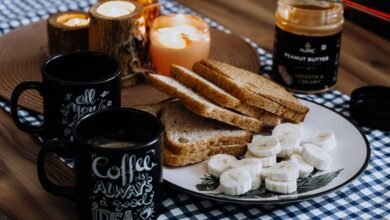10 Fascinating Facts About the San Andreas Fault

The San Andreas Fault is one of the most well-known geological features on Earth, shaping California’s landscape and being a major source of seismic activity. This fault has sparked the interest of both scientists and the general public due to its potential to cause devastating earthquakes. Let’s dive into ten captivating facts about the San Andreas Fault, from its tectonic characteristics to its historical significance and its looming threat of “The Big One.”
1. Tectonic Boundary Between Two Plates
The San Andreas Fault is where two of the Earth’s massive tectonic plates, the Pacific Plate and the North American Plate, meet. These plates slide past each other in a horizontal movement, creating a “transform fault.” Over millions of years, this movement has shaped the landscape of California. Unlike other types of faults where plates either collide or pull apart, the San Andreas Fault moves laterally, making it prone to frequent and sometimes powerful earthquakes.
2. It Stretches Over 800 Miles
The San Andreas Fault extends for more than 800 miles (1,300 kilometers) across California, from the Mendocino coast in the north to the Salton Sea in the south. It passes near several major cities, including Los Angeles and San Francisco, putting millions of people at risk. In some areas, the fault is visible on the surface, such as in the Carrizo Plain, where its mark on the landscape is clearly etched.
3. The Plates Move at Different Speeds
The Pacific Plate moves northwest at about 2 inches per year, while the North American Plate moves southeast at a much slower pace. The friction between these plates builds up pressure, and when the stress becomes too great, it results in an earthquake. Interestingly, this movement is not smooth but occurs in sudden bursts, which is why earthquakes happen so unpredictably.
4. Responsible for Major Earthquakes
The San Andreas Fault is notorious for causing some of the most significant earthquakes in U.S. history. The most famous is the 1906 San Francisco earthquake, with a magnitude of 7.9, which nearly destroyed the city. This event was a turning point in the study of earthquakes and led to modern seismology. Other notable quakes include the 1989 Loma Prieta earthquake and the 1857 Fort Tejon earthquake, both of which caused significant damage.
5. The 1906 San Francisco Earthquake Changed Everything
The 1906 earthquake not only caused widespread destruction, killing around 3,000 people and leaving tens of thousands homeless, but it also revolutionized how scientists study seismic activity. This disaster helped propel the development of earthquake science and improved building designs to make structures more resistant to seismic forces.
6. The Risk of “The Big One”
California is overdue for “The Big One,” a massive earthquake predicted to occur along the southern portion of the San Andreas Fault. The last significant quake in this section was over 300 years ago, leading scientists to believe that a large earthquake is imminent. If “The Big One” occurs, it could reach a magnitude of 7.8 and cause widespread destruction, especially in densely populated areas like Los Angeles.

7. A Transform Fault with Horizontal Movement
As a transform fault, the San Andreas Fault’s movement is mainly horizontal, which differs from other faults where plates collide or pull apart. This horizontal “strike-slip” movement causes lateral shaking during earthquakes, a feature that makes the fault unique compared to others that may cause more vertical, up-and-down movement during seismic events.
8. Constant Monitoring of the Fault
The San Andreas Fault is one of the most closely monitored faults globally. Scientists use GPS stations to measure ground movement, seismic sensors to detect vibrations, and satellite imagery to observe changes on the Earth’s surface. These tools help researchers understand how stress builds along the fault, which in turn aids in estimating the likelihood of future earthquakes.
9. Early Warning Systems in Place
California has developed earthquake early warning systems that provide residents with a few crucial seconds of notice before the shaking begins. These systems detect the initial, less destructive seismic waves and issue alerts before the more damaging waves hit. While the time frame is short, it can be enough to allow people to take cover, stop machinery, or halt trains, reducing the risk of injury or damage.
10. Impact on California’s Geography
The San Andreas Fault has played a significant role in shaping California’s landscape. Its movement has created mountain ranges like the San Gabriel and San Bernardino mountains, and it continues to slowly shift regions of the state. Over millions of years, the fault has gradually moved Los Angeles closer to San Francisco, and it will continue to reshape the terrain for centuries to come.
Conclusion
The San Andreas Fault is not only an iconic geological feature but also a constant reminder of the dynamic forces at play beneath our feet. Its potential for massive earthquakes, particularly “The Big One,” keeps scientists, engineers, and emergency planners on high alert. With ongoing research and monitoring, we are getting better at understanding the fault’s behavior, helping to prepare for future seismic events and mitigate their impact. While earthquakes are inevitable, advances in science and technology give hope that we can reduce the risks and better protect those living near this powerful fault.




